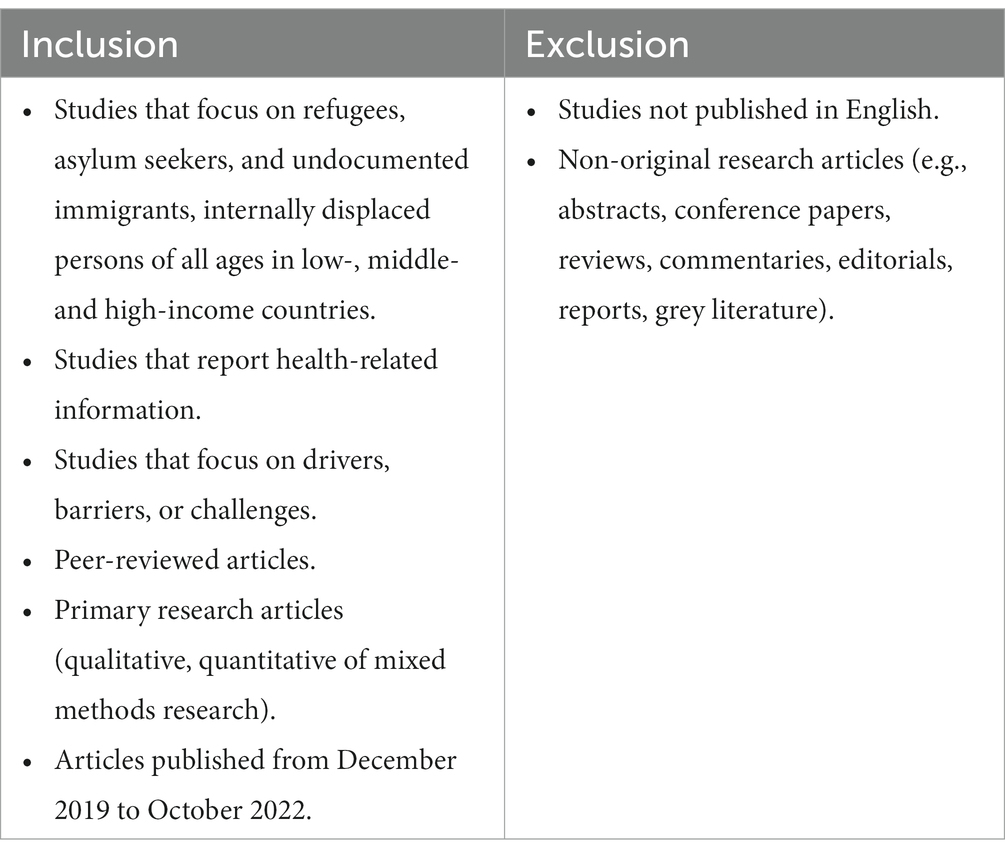Refugee Economic Inclusion | Launching a New Study! – Asylum Access

Report on the Economic and Social Impact of Refugee Work Rights in Thailand
Introduction and Alignment with Sustainable Development Goals (SDGs)
A report titled “The Study on the Economic and Social Impact of Granting Work Rights to Refugees in Thailand” has been launched through a collaboration between the Myanmar Response Network (MRN), Asylum Access Thailand, and the Center of Excellence in Econometrics (CEE) at Chiang Mai University. The study provides a comprehensive analysis of granting work rights to refugees, directly contributing to the advancement of several Sustainable Development Goals (SDGs), including SDG 8 (Decent Work and Economic Growth), SDG 10 (Reduced Inequalities), and SDG 16 (Peace, Justice and Strong Institutions). The research combines rigorous economic analysis with the field experience of civil society actors to propose evidence-based policy recommendations.
Key Findings: Advancing Decent Work and Economic Growth (SDG 8)
The report introduces the concept of “Refugee Economic Inclusion,” which reframes refugees as active economic contributors. The findings, based on field data from Tak, Chiang Mai, and Bangkok, demonstrate that granting legal work rights yields significant economic benefits that align with SDG 8.
- Poverty Alleviation: Increased household income for refugee families directly addresses SDG 1 (No Poverty).
- Local Economic Stimulus: The inclusion of refugees boosts local consumption and improves market access for goods and services.
- Labor Market Stability: Myanmar refugees are identified as “foundational labor” in critical sectors such as agriculture, manufacturing, and services. Their contributions ensure business continuity and price stability, particularly for small and medium-sized enterprises.
- Fiscal Benefits: Formalizing refugee labor expands the government’s tax base, generating revenue that can be used to strengthen public services and promote national economic resilience.
Social Cohesion and Reduced Inequalities (SDG 10 & SDG 11)
The study highlights that economic inclusion is intrinsically linked to social progress. By integrating refugees into the formal economy, Thailand can advance its commitments to creating inclusive and equitable societies.
- Enhanced Community Development: The integration of working refugees supports long-term, sustainable community development and enhances social cohesion, contributing to SDG 11 (Sustainable Cities and Communities).
- Reducing Systemic Disadvantage: Providing a legal pathway to self-sufficiency is a critical step in reducing the systemic inequalities faced by displaced populations, a core tenet of SDG 10 (Reduced Inequalities).
A Rights-Based Framework for Inclusive Institutions (SDG 16)
The “Refugee Economic Inclusion” model is presented as a rights-based approach that promotes dignity, legal certainty, and institutional strength. This framework is fundamental to achieving SDG 16 (Peace, Justice and Strong Institutions) by advocating for the development of effective, accountable, and inclusive systems.
- The model calls for clear legal structures to manage refugee labor integration fairly and responsibly.
- It emphasizes the need for robust support from state institutions, the private sector, and civil society to ensure successful implementation.
Policy Recommendations for Sustainable Development
The report outlines a series of urgent policy recommendations designed to achieve shared prosperity and sustainable growth, directly supporting multiple SDGs.
- Implement conditional inclusion policies that protect refugee rights while mitigating potential impacts on the domestic labor market.
- Invest in upskilling programs for the Thai labor force to enhance overall productivity and competitiveness.
- Improve national labor market efficiency to better integrate all workers.
- Transition Thailand’s economic model from being cost-based to productivity-driven, fostering long-term sustainable growth in line with SDG 8.
Collaborative Approach: Partnerships for the Goals (SDG 17)
The study itself serves as a model for SDG 17 (Partnerships for the Goals). It represents a successful multi-stakeholder partnership that leverages the unique strengths of different actors to achieve a common objective.
- Civil Society Organizations: The Myanmar Response Network and Asylum Access Thailand provided grounded insights based on their long-standing work with refugee communities.
- Academic Institutions: The Center of Excellence in Econometrics at Chiang Mai University supplied rigorous statistical analysis and economic modeling.
This collaborative approach ensures that the resulting policy recommendations are both scientifically sound and reflective of the lived realities of displaced populations.
Analysis of Sustainable Development Goals in the Article
1. Which SDGs are addressed or connected to the issues highlighted in the article?
-
SDG 1: No Poverty
- The article discusses the impact of work rights on refugee “household income,” directly linking economic inclusion to poverty alleviation for displaced populations.
-
SDG 8: Decent Work and Economic Growth
- This is the central theme. The article advocates for “Refugee Economic Inclusion,” formalizing the labor of refugees, filling “labor shortages,” and transitioning to a “productivity-driven labor model,” all of which are core to SDG 8.
-
SDG 10: Reduced Inequalities
- The report’s call for a “rights-based approach” and mechanisms to “include them fairly and responsibly in the Thai economy” aims to reduce inequalities faced by refugees based on their status. It also addresses potential impacts on Thai workers to promote “shared prosperity.”
-
SDG 16: Peace, Justice and Strong Institutions
- The article emphasizes the need for “clear legal frameworks” and a “rights-based approach” to ensure refugees can live in dignity. This aligns with promoting the rule of law and access to justice for all.
-
SDG 17: Partnerships for the Goals
- The study itself is a product of a partnership between “academic researchers and civil society actors.” The report also calls for a collaborative approach involving “state institutions, the private sector, and civil society” to support refugee inclusion.
2. What specific targets under those SDGs can be identified based on the article’s content?
-
Under SDG 1 (No Poverty):
- Target 1.3: Implement nationally appropriate social protection systems and measures for all. The article mentions that formalizing refugee labor would enhance “tax and social protection systems.”
-
Under SDG 8 (Decent Work and Economic Growth):
- Target 8.3: Promote development-oriented policies that support productive activities, decent job creation, entrepreneurship, creativity and innovation, and encourage the formalization and growth of micro-, small- and medium-sized enterprises. The article’s core proposal for “Refugee Economic Inclusion” and “formalizing these contributions through legal inclusion” directly supports this target.
- Target 8.5: By 2030, achieve full and productive employment and decent work for all women and men. The study advocates for granting work rights to refugees, who are currently excluded from formal employment.
- Target 8.8: Protect labour rights and promote safe and secure working environments for all workers, including migrant workers, in particular women migrants, and those in precarious employment. The call for a “rights-based approach” and “clear legal frameworks” to protect refugees is a direct reflection of this target.
-
Under SDG 10 (Reduced Inequalities):
- Target 10.2: By 2030, empower and promote the social, economic and political inclusion of all, irrespective of age, sex, disability, race, ethnicity, origin, religion or economic or other status. The entire concept of “Refugee Economic Inclusion” is aimed at achieving this for refugees.
- Target 10.7: Facilitate orderly, safe, regular and responsible migration and mobility of people, including through the implementation of planned and well-managed migration policies. The recommendation to implement “conditional inclusion policies” for refugees aligns with this target.
-
Under SDG 16 (Peace, Justice and Strong Institutions):
- Target 16.3: Promote the rule of law at the national and international levels and ensure equal access to justice for all. The demand for “clear legal frameworks” to grant rights to refugees is a key component of this target.
-
Under SDG 17 (Partnerships for the Goals):
- Target 17.17: Encourage and promote effective public, public-private and civil society partnerships. The study is a result of such a partnership (“academic researchers and civil society actors”) and advocates for its expansion to include “state institutions, the private sector, and civil society.”
3. Are there any indicators mentioned or implied in the article that can be used to measure progress towards the identified targets?
-
Implied Indicators for SDG 1 & 8:
- Changes in “household income” for refugee families.
- Volume of “local consumption” in areas with refugee populations.
- Rate of formal employment among refugees.
- Increase in government revenue through “tax” contributions from newly formalized workers.
-
Implied Indicators for SDG 10:
- The existence and implementation of “conditional inclusion policies” that grant work rights.
- Measures of “social cohesion” between refugee and host communities, which the study analyzed.
-
Implied Indicators for SDG 16:
- The establishment of “clear legal frameworks” that grant and protect the work rights of refugees.
-
Implied Indicators for SDG 17:
- The number and effectiveness of partnerships formed between “state institutions, the private sector, and civil society” to implement the “Refugee Economic Inclusion” model.
SDGs, Targets and Indicators Table
| SDGs | Targets | Indicators (Mentioned or Implied in the Article) |
|---|---|---|
| SDG 1: No Poverty | 1.3: Implement nationally appropriate social protection systems. | Expansion of social protection systems to include refugees; Increase in refugee household income. |
| SDG 8: Decent Work and Economic Growth | 8.3: Promote development-oriented policies that support decent job creation and formalization. | Rate of formalization of refugee labor; Number of refugees with legal work rights. |
| 8.5: Achieve full and productive employment and decent work for all. | Increase in local economic activity and consumption; Filling labor shortages in key sectors. | |
| 8.8: Protect labour rights and promote safe and secure working environments for all workers, including migrant workers. | Establishment of legal frameworks protecting refugee labor rights. | |
| SDG 10: Reduced Inequalities | 10.2: Empower and promote the social, economic and political inclusion of all, irrespective of origin or other status. | Rate of economic inclusion of refugees; Measures of social cohesion. |
| 10.7: Facilitate orderly, safe, regular and responsible migration and mobility of people. | Implementation of conditional inclusion policies for refugees. | |
| SDG 16: Peace, Justice and Strong Institutions | 16.3: Promote the rule of law and ensure equal access to justice for all. | Existence of clear legal frameworks granting work rights to refugees. |
| SDG 17: Partnerships for the Goals | 17.17: Encourage and promote effective public, public-private and civil society partnerships. | Number of active partnerships between academia, civil society, state institutions, and the private sector on refugee inclusion. |
Source: asylumaccess.org

What is Your Reaction?
 Like
0
Like
0
 Dislike
0
Dislike
0
 Love
0
Love
0
 Funny
0
Funny
0
 Angry
0
Angry
0
 Sad
0
Sad
0
 Wow
0
Wow
0



























;Resize=805#)



















































